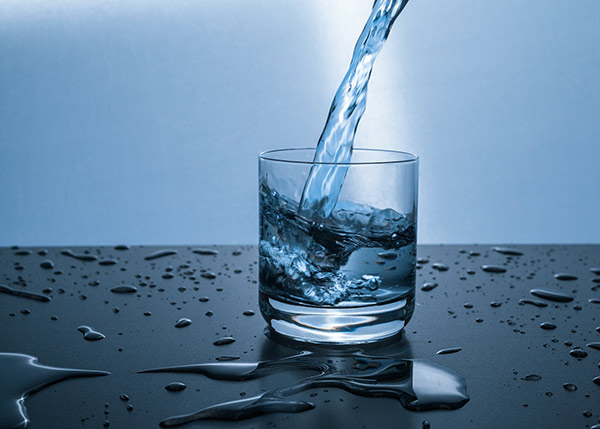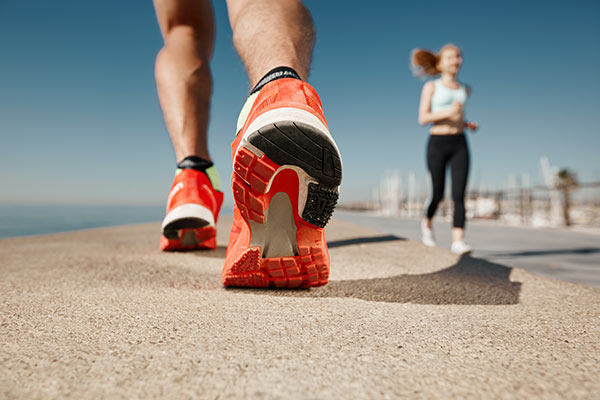Are You Drinking Enough Water? Find Out How Much You Need
Are you drinking enough water? Australia, and the world, is on course for its hottest year on record, (a record that looks like it will only last a year!). While we all try and continue with a good exercise regime, I thought I would take the time to have a think about what our bodies need in this crazy time – and my first thought came to water!
I wanted to give some insight into:
- Our body’s water composition
- How dehydration relates to low back pain
- How much water should we be drinking
- Water and endurance athletes
Our Body’s Water Composition
Your body is about 67 percent water. Similar to our planets oceans, the mineral content of your blood and lymph is approximately the same as sea water.
The average human body contains 38 to 50 litres of water (variable depending on your size). Your blood is 83 percent water, muscles, brain, and heart 75 percent water, lungs 86 percent. kidneys 83 percent, eyes 95 percent, and bones just 22 percent. Water affects every organ and cell within your body.
We are constantly losing this water during day-to-day life, through breathing, sweating, going to the toilet, and through the body’s day-to-day cell processes. As the warm weather kicks in, and our alcohol and coffee intake increases (which act as diuretics), our water loss may increase, which means it needs replacing at a faster rate.
If your body’s water content drops by as little as 2 percent, you will feel fatigued. Some studies have shown that this little 2% decrease in fluid level can leave you itchy, lethargic, constipated and feeling poor all around. In one study on women, “Mild dehydration affects mood in healthy young women”, a fluid loss of 1.36% post exercise impaired both mood and concentration, while increasing the rate of headaches.
If it drops by 10 percent, you will experience significant health problems, and this can include arthritis and back pain.
How can dehydration relate to low back pain?
Water plays an enormous role in the health of our backs. Our backs are made up of 24 vertebrae and between each vertebrae lies a disc, which functions as a shock absorber for all the daily activities that we put our backs through. This disc has two parts: an outer, flexible but very tough ring, which is filled with a jelly-like water-based substance, called the nucleus pulposis.
The discs are the shock-absorbers that keep your vertebrae from rubbing together. But the discs are UNABLE to do their job unless they are fully hydrated! The cushioning ability of your discs is based on their water content.
When we are lying down, the discs slowly rehydrate. This daily dehydration and nightly rehydration of the discs is the reason why most of us are generally up to about 1-1.5 cm shorter when we go to bed than when we wake up in the morning! Regular movement during the day is also important to keep discs hydrated – as the spine moves forward and back, the discs will absorb what water is available.
Our discs will successfully re-hydrate themselves during the night, and also during the day when possible, as long as there are adequate water levels within the body. When there is not enough water available to fully hydrate the jelly-like centre, the whole disc becomes compromised. The disc is designed, when fully hydrated, so that the outer ring bears 25% of the weight load while the inner nucleus pulposis supports 75%.
When the inner portion is dehydrated, it cannot support its share of the load, so more and more of your weight is borne by the outer ring, which simply was not designed for that purpose. This can cause pain, swelling, and possibly even cause ruptures or herniations of the outer shell of the disc. As we age, the percentage of water we have in our bodies decreases, simultaneously our discs decrease in water content leading to decreased disc height (and overall body height) and joint space narrowing.
In addition, as dehydration can cause joint aches, we must remember that our spine is composed of multiple joints (facet joints) that run along the left and right side of each vertebral body and disc. The same way your knee joint can exhibit pain, so can the joints of your spine.
Dehydration can also influence general muscle aches and cramping. When the body is not adequately hydrated, muscles cannot efficiently get rid of the by-products of muscle use, which can cause the muscle healing and regeneration process to be inhibited. This in turn can result in generalised ache, and decreased efficiency.
What this means is that one of the simplest and most effective ways to reduce back pain is to increase your daily intake of clean, healthy water.
So how much water should I be drinking?
It is often said to drink about 8 cups a day. However, this may not be true because drinking levels usually depend on the different needs of each person. For example, an athlete will need to drink lots more water than someone who is not an athlete. The athlete loses more water while exercising so will have lots more to replenish. Another example is two people of the same lifestyle (work/sport/hobbies etc) but different weight will also differ in the amount of drinking levels. The heavier person will need more water to stay hydrated.
So, to make it more simple, at a minimum drink one cup of water for every 10 kilograms of body weight. For example, an 80kg person who does not exercise or work in hot climates needs a minimum of 8 cups. This means 8 cups of pure water; soft drinks, tea, and coffee generally do not count even though they have water in it! These drinks contain synthetic sweeteners and caffeine that can act to dehydrate you. Try to limit the amount of beverages you drink other than water.
Disclaimer: there is some new evidence to suggest that coffee does not dehydrate as much as previously thought – though from what we know so far, my suggestion would be to still try to actively limit your intake).
- Drink twice as much as it takes to satisfy your thirst
- Drink frequently throughout the day to prevent dehydration
- If you exercise or work in hot climates you will need to drink extra amounts of water
- One way to know if you are adequately hydrated is to look at the colour of your urine.
[bctt tweet=”At a minimum drink one cup of water for every 10 kilograms of body weight.”]
This chart below will help you compare your urine colour.
If it’s summer, or you live in a warm climate, like here in Canberra (in summer), then you need to drink extra than the minimum recommended amount of water.
Don’t be expecting to completely rehydrate your body in a day or two. It may take weeks, possibly months. And the older you are, the longer it takes.
Water intake for endurance athlete:
I did a bit of research around this one, as although I have a lot of respect for the endurance athlete – I could never contemplate becoming one myself!
There is a lot of information out there, and mis-information. There are also a lot of fancy calculations about what fluid you should drink – water vs electrolyte and carbohydrate containing sports drinks. Also how much you should be consuming in training and during an event. When drinking water, the latest evidence is suggesting to drink as your thirst tells you to!
One great webpage I came across was Run Rock Roll, which gave some good info on fluid/electrolyte intake during marathon running. The article went on to explain that you can suffer from Hyponatremia, which is low blood salt level due to abnormal fluid retention from over-drinking, as well as dehydration, being due to fluid losses from under-drinking. The rock and roll marathon concept looked very cool as well – have a look.
In a nutshell, it can be seen that on a population basis we are not drinking enough water to keep ourselves healthy. The health of our joints and in particular our backs can be greatly improved through keeping ourselves adequately hydrated, and sometimes may even be the solution to on-going aches and pains!




I learnt a lot from this and is really helpful to know, I will remember the ‘cup of water for every 10 kg’ minimum rule for sure